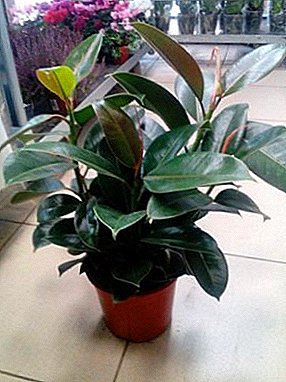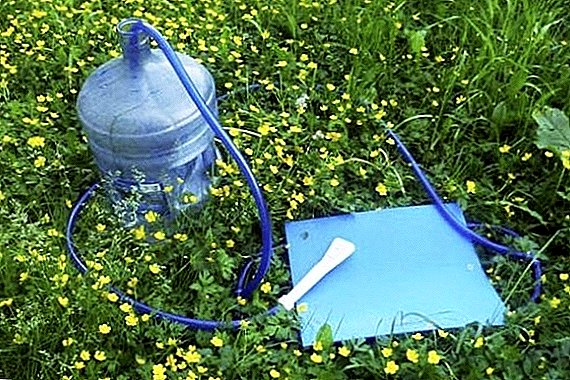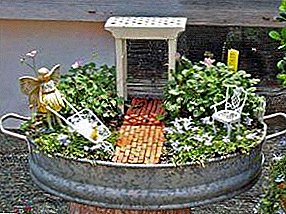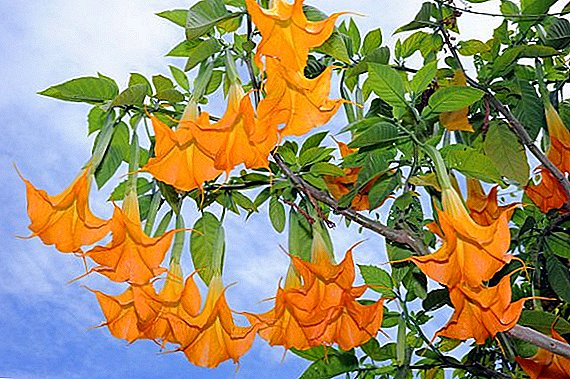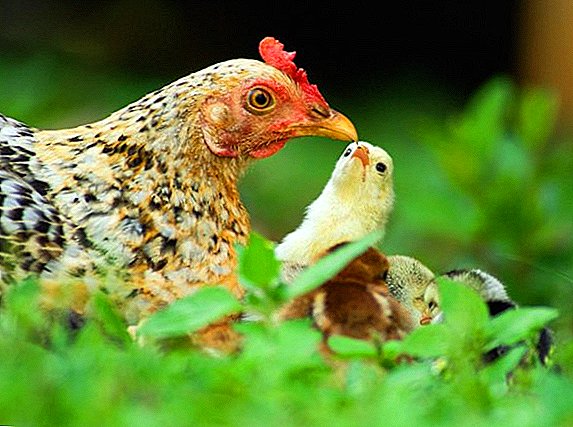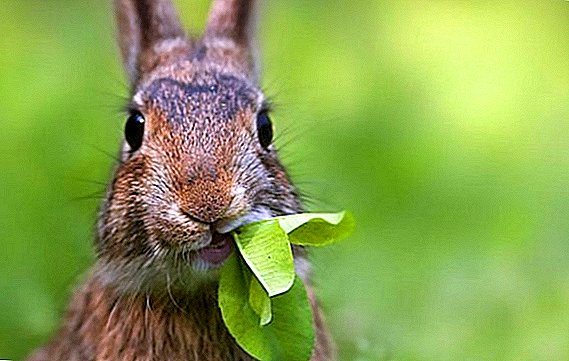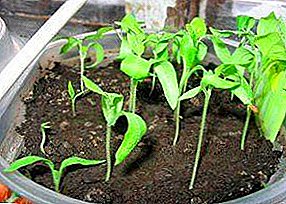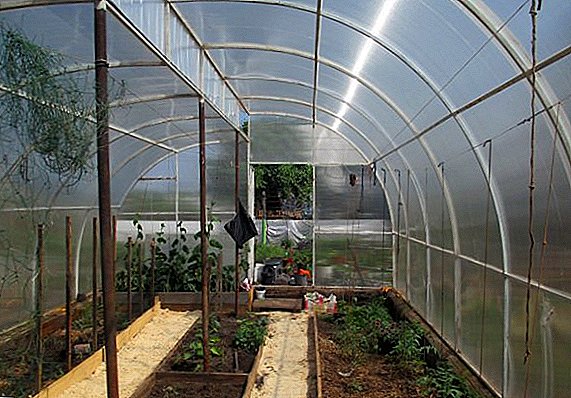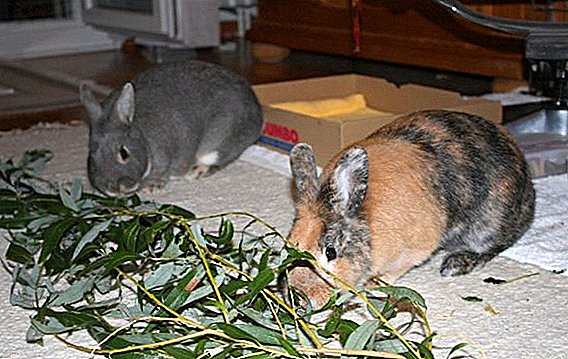 Rough food required in the diet of rodents. They help the animal to fill the deficit of fiber and regulate metabolic processes in the body.
Rough food required in the diet of rodents. They help the animal to fill the deficit of fiber and regulate metabolic processes in the body.
In the cold season, branches replace succulent feed, rodents sharpen constantly growing incisors about them.
But not all trees are equally useful for animals.
Which branches are suitable for consumption by rodents for food, and which ones are not, we will tell in our material.
What branches can be given to rabbits
The list of trees whose branches are allowed in the diet of rabbits is quite large. The good news is that most of them can be found in your backyard. 
Fruit
Animals with pleasure feed on the sprigs rich in vitamins:
- gooseberry;
- apple trees;
- blueberries;
- grapes;
- currants;
- hawthorn;
- chestnut;
- rowan.
Did you know? A rabbit can be frightened by a predator to death (literally).
Hardwood
Unlike fruit trees, which can be given to rodents without fear, some deciduous species should be introduced into the diet in a limited quantity.  It:
It:
- birch weeping;
- Linden;
- willow;
- aspen;
- Walnut.
The fact is that in the bark of oak and alder contains a high concentration of tannins that cause constipation. Therefore, it is best to feed such rodents in food in the summer, when an excess of green grass and vegetables causes diarrhea in rodents.
Birch is known for its diuretic properties, so its frequent consumption threatens rodents with dehydration. Willow is indispensable in the treatment of gastrointestinal infections. But this should not be abused, so as not to harm the rodents.
We encourage you to find out which grass is prohibited for rabbits.
Conifer
No less useful for rabbits needles:
- Pine;
- fir;
- spruce.
It is given throughout the year. But from February, they stop entering such branches into the ration due to the fact that the trees begin to produce resin, which is bitter.  The needles are rich in vitamins and bactericidal substances, animals should be taught to it gradually and given according to the scheme 14/14. That is, every two weeks you need to take two-week breaks.
The needles are rich in vitamins and bactericidal substances, animals should be taught to it gradually and given according to the scheme 14/14. That is, every two weeks you need to take two-week breaks.
All listed tree species are suitable for food to both ordinary and decorative rabbits.
You will also be interested to learn about: the features of the maintenance and feeding of ornamental rabbits and the features of the choice of toys for ornamental and dwarf rabbits.
What can not be given from the branches
Along with a large assortment of rodent-friendly branches, There are trees that are not suitable for rabbit food:
- elder;
- lilac;
- wild rosemary;
- wolf's bast
In their branches contain a large number of toxic substances. Pear and stone trees are also dangerous for rodents because of their hydrocyanic acid content.
Important! Branches significantly reduce the risk of cell damage. Rabbits grind their teeth about them, not gnawing the floors or walls of their homes.
It:
- plum;
- peach;
- cherry;
- apricot.

Features of winter feeding
Branched food is used in the diet of rabbits all year round, but especially it is necessary for animals in winter.
What branch feed to give rabbits in winter
Fruit trees and bushes contain a large amount of various vitamins. The same applies to the branches of needles - the only fresh food in the cold season. It is rich in phytoncides and vitamins.
From late autumn and throughout the winter, they can help rabbits cope with avitaminosis and strengthen their bodies.
Read more about the specifics of winter feeding rabbits.
How to prepare branches
Collecting branches should begin no later than May-June, choosing those on which there are many leaves, or those on which buds are just starting to blossom. Harvesting branches is best in trees that grow far from carriageways. This ensures that the food for your rabbits is not contaminated by harmful exhaust gases.
For drying, choose shoots with a diameter of about 1 centimeter, which are tied up in small brooms. It is best to dry them under a canopy or in a dry, darkened room. It is important to protect it from direct sunlight. For the preparation of suitable and thicker branches, about which rodents will gladly sharpen their teeth.  The needles do not need to be dried, it can be fresh injected into the diet of rabbits all year round.
The needles do not need to be dried, it can be fresh injected into the diet of rabbits all year round.
Important! Juniper twigs and leaves should not be given to rabbits with unpeeled berries, as they are poisonous.
What to feed, except branches
In spite of its advantage, the branch feed should not be the only food for rabbits. His daily intake should be at least 300 g in summer and 200 g in winter. For the normal development of the animal's body, it needs both green, juicy, and coarse, combined feed, as well as food of animal origin.
The more diverse and richer the microelements and vitamins will be the nutrition of the rodent, the healthier and stronger your flock will be.
Juicy feeds include:
- potatoes;
- beet;
- squash;
- silage;
- Jerusalem artichoke.
 To rude:
To rude:- straw;
- branch feed;
- hay.
Animal feed:
- bone flour;
- buttermilk;
- serum;
- fish fat.
Did you know? Rabbits see what happens behind them without turning their heads.
Green feed:
- plantain;
- dandelions;
- rhubarb;
- field grass.
 Properly selected and harvested branch feed is an important component of a complete rodent diet. In some cases, especially in early spring, when many of the hosts are running out of hay, it is the branches of the trees that can help the rabbits to fill the lack of roughage.
Properly selected and harvested branch feed is an important component of a complete rodent diet. In some cases, especially in early spring, when many of the hosts are running out of hay, it is the branches of the trees that can help the rabbits to fill the lack of roughage.This is an affordable and inexpensive way to ease the care and maintenance of animals.


